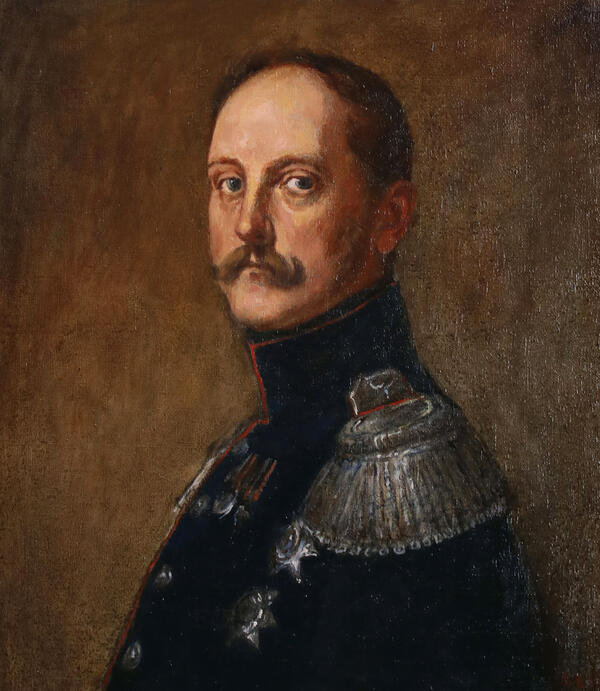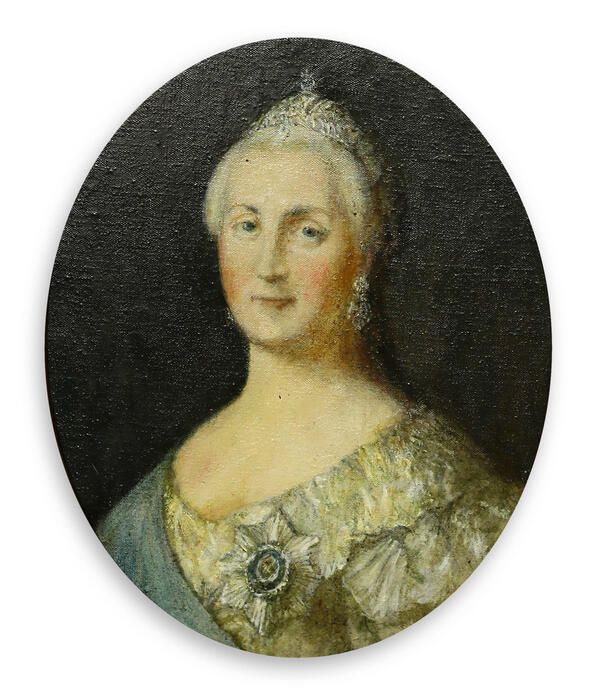This painting was created by the artist Vladimir Anatolyevich Yefaritsky. This is his free interpretation of the original 1860 painting “Exchange Yard in Orenburg” by Andrey Nikolayevich Goronovich, a member of the Imperial Academy of Arts. The original is housed by the State Russian Museum.
From 1851 to 1860, Andrey Goronovich lived and worked in the Orenburg Governorate. In 1853, he took part in an expedition to Ak Mosque during which he created many watercolors and sketches. One of the most significant works in the artist’s career was his painting “Exchange Yard in Orenburg” which earned him the title of academician.
The painting depicts the inner square of the Exchange Yard with merchants, their assistants, as well as Turkmen and Khivan people. Apart from people, the scene also features cattle, which was a major commodity at the time. In the background, there are low two-story buildings and the walls that surrounded them and marked the borders of the area.
The Orenburg guidebook, published in 1977, states that the Exchange Yard was founded in 1744, three kilometers southwest of the city. Nowadays, this area is part of Orenburg.
The buildings of the Exchange Yard have not been preserved. According to descriptions from that time, one can get an idea of its size: there were 344 shops, 140 barns, rooms for merchants, a mosque, and a church.
There were two entrances to the Exchange Yard. The so-called Russian gates faced the city, while the Asian gates faced the edge of the Kazakh steppe.
Caravans of camels carrying goods of the East would arrive from places like Khiva, Bukhara, Khorezm, Tashkent, and Samarkand. Merchants from cities like Moscow, Nizhny Novgorod, Rostov, and Kiev would come to trade with them.
In 1929, the ruins of the Exchange Yard were
visited by Anatoly Vasilyevich Lunacharsky, the first People’s Commissar of
Education in the RSFSR. He wrote,





